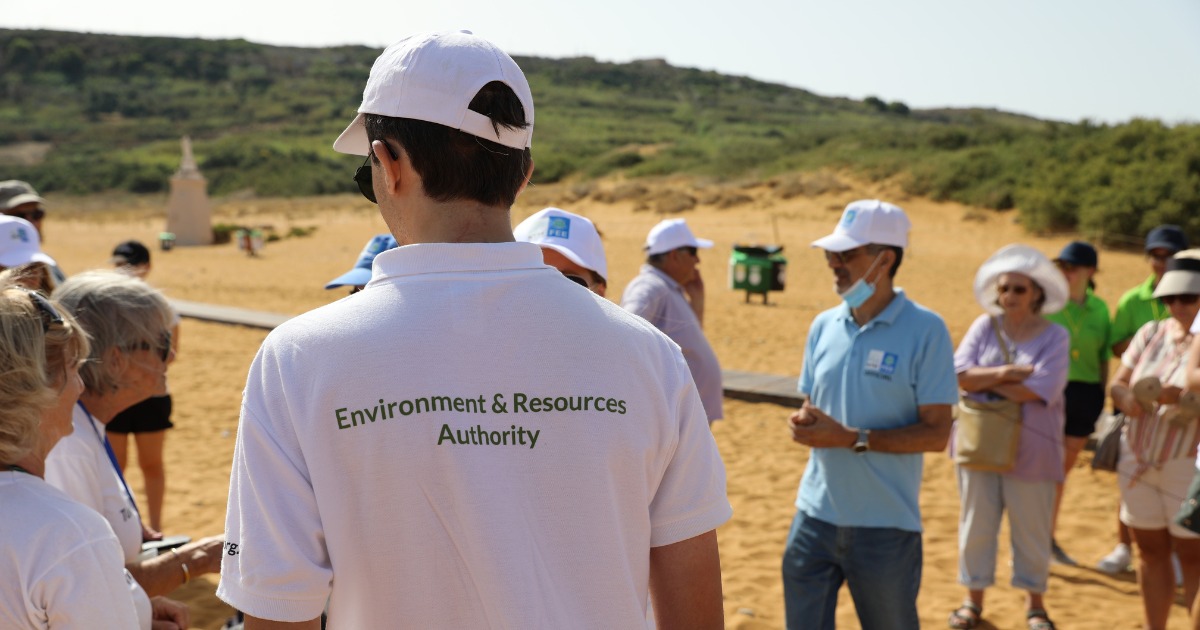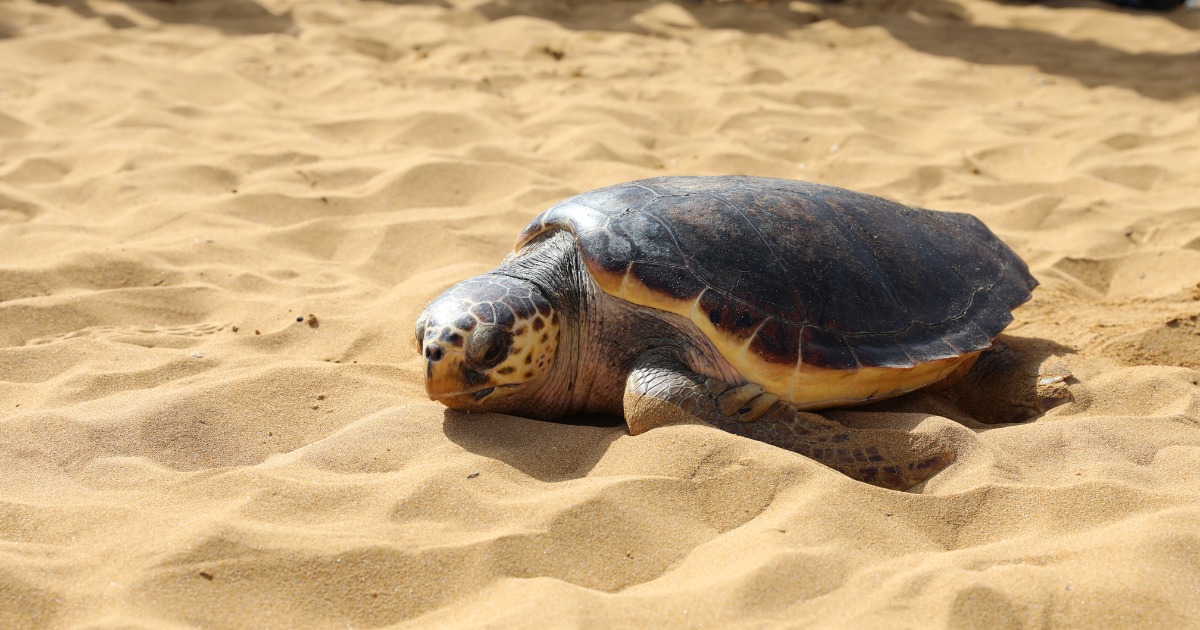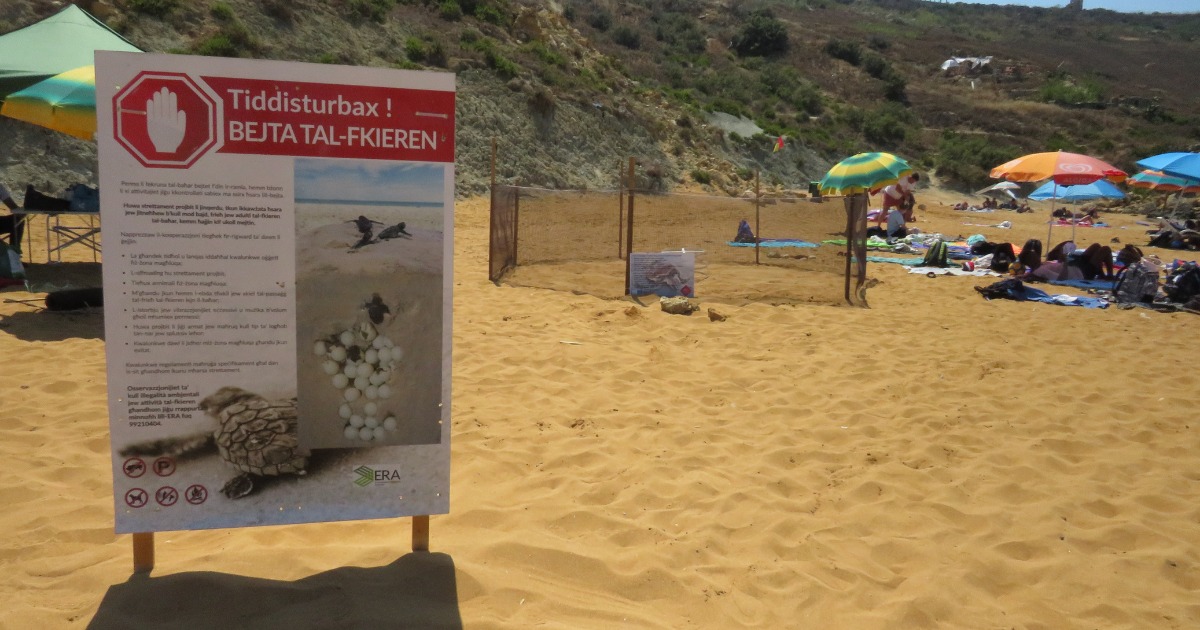Here’s what Malta’s authorities are doing to help the turtles (and what you can do too)
One of the many areas ERA authority has worked in relates to the conservation of marine life which, of course, includes turtles and their nests.
Finding out that a turtle has chosen one of Malta or Gozo’s many beaches as its nesting spot is always the source of ample celebration – and with reason.
Not only does this show that the population of sea turtles in Maltese waters (and the marine ecosystem as a whole) is thriving, but it also says a lot about the quality of the beach housing the nest.
One of the most recent turtle nests was discovered last July, at Gozo’s iconic Ramla l-Hamra Bay.
Now this is just one of countless nests discovered on the islands’ beaches in the past couple of years – and it’s absolutely no coincidence that more and more turtles seem to be choosing the Maltese islands as their nesting places of choice in recent years.
For that, we’ve got Malta’s Environment and Resources Authority (ERA) to thank.

ERA is spurred forward by its commitment to safeguard the islands’ natural environment and thus promote a sustainable quality of life. One of the many areas this authority has worked in relates to the conservation of marine life which, of course, includes turtles and their nests.
The past years have seen ERA’s efforts in conservation and protection laws get stronger and stronger, so it really comes as no surprise that an ever-increasing number of turtles are being registered around the islands.
Curious about what ERA’s been doing to save the turtles?
Well, there’s a lot to go through, so here goes!
For starters, when talking about ‘turtles’ here we’re mostly referring to the Loggerhead Turtle (caretta caretta). This species is a long-living and slowly maturing marine species that inhabits tropical to warm temperate areas.
Unfortunately, the Loggerhead Turtle is classified as ‘globally endangered’ by the International Union for Conservation of Nature (IUCN), so many national and international laws have been put in place to protect the species’ existence.
With that being said, it should come as no surprise that capturing, killing, taking, trading and deliberately disturbing these turtles – particularly during the breeding, rearing, and migration periods – is prohibited and subject to legal action.

Apart from that, ERA has designated one coastal area and another three offshore areas for the protection of the species.
But it’s not just the turtles themselves that enjoy a high level of legal protection…
Areas known to house Loggerhead Turtle eggs are considered ‘protected areas’ under the Environment Protection Act and as Natura 2000 sites through the EU Habitats Directive – but wait, there’s more!
Destroying or stealing turtle eggs from the wild constitutes a criminal offence, with offenders facing fines ranging from €500 to €2,400 for every single egg destroyed or stolen.
Moreover, as soon as a turtle nest is discovered, the area is cordoned off and ERA issues an Emergency Conservation Order. This way, the nest spends little to no time unsupervised after being initially discovered.
Once all this is done, Nature Trust Malta (NTM) brings together a team of volunteers to look over the nest 24/7.

As the old saying goes, prevention is better than cure – and that’s why NTM routinely monitors Malta’s beaches throughout nesting season to try and identify turtle tracks and thus, turtle nest locations.
As you can see, safeguarding Malta’s marine animals is no easy feat, and entities as well-informed and organised as ERA are downright pivotal in these creatures’ conservation.
Having said that, here are a couple of things that you should do if you ever discover an unsupervised turtle nest:
- Call ERA (+356 2292 3500) and Nature Trust Malta (+356 2131 3150) and inform them of the nest’s location
- If it’s dark, avoid shining bright lights on or around the nest
- Avoid trampling the nest
- Avoid touching both the eggs and the turtle
- Refrain from creating excessive noise
- Stay a minimum of five to 10 metres away from the nesting site
Apart from that, beachgoers should also do their utmost to keep beaches as ‘turtle-friendly’ as possible by cleaning up after themselves and refraining from creating excessive noise and making fire pits.
Should you witness any environmental illegalities or turtle-related activity, make sure to contact ERA on +356 2292 3500.